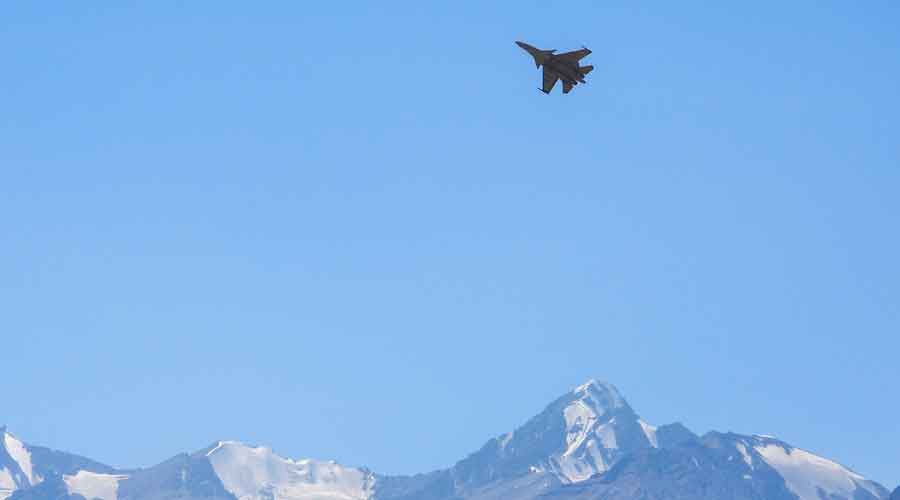India and China on Tuesday night issued statements that suggested New Delhi has either not pushed or has been unable to push for the restoration of status quo ante along the Line of Actual Control.
A military veteran went so far as to say that “India seems to have accepted the new status quo and given up the restoration of status quo ante as of April 2020”.
The statement issued by the Indian defence ministry around 9.45pm on Tuesday — almost 24 hours after 14 hours of military talks on Monday — said: “The two sides had candid and in-depth exchanges of views on stabilising the situation along the LAC in the India-China border areas. They agreed to earnestly implement the important consensus reached by the leaders of the two countries, strengthen communication on the ground, avoid misunderstandings and misjudgements, stop sending more troops to the frontline, refrain from unilaterally changing the situation on the ground, and avoid taking any actions that may complicate the situation.”
An identical statement was issued by the Chinese embassy in New Delhi. The military talks on Monday were attended by an official of the Indian foreign ministry.
The agreement to “stop sending more troops to the frontline, refrain from unilaterally changing the situation on the ground, and avoid taking any actions that may complicate the situation” appears to imply that India has settled on the alignment of border forces, and lines of control, as they exist now, rather than as they were aligned in April, when the People’s Liberation Army (PLA) of China began to push into areas India considered its own.
The thrust of the ongoing effort appeared to be on managing the border situation and preventing it from escalating further, not ensuring that the Chinese withdraw from areas it had intruded upon since early May.
That problems on the ground were yet to be resolved was apparent from the statements. “The two sides also agreed to hold the 7th round of military commander-level meeting as soon as possible, take practical measures to properly solve problems on the ground, and jointly safeguard peace and tranquillity in the border area,” the statements from the Indian defence ministry and the Chinese embassy added. On Monday, the sixth round of talks was held.
In the months since April, the PLA has radically altered the unmarked LAC, pushing south and west along several friction points including the Galwan Valley, the Depsang plains and heights overlooking the Pangong Tso.
According to some estimates, the PLA has now taken over close to 1,000sqkm in the barren but strategically critical plains and valleys of eastern Ladakh.
The demand to restore status quo ante has been missing from recent negotiations India has had with the Chinese at both the military and the diplomatic levels.
Publicly, the Indian government had made the restoration of status quo ante the prerequisite for bringing bilateral ties back on track.
Through the day on Tuesday, before the statements were issued at night, several veterans had aired suspicion that India may have resorted to a give-and-take formula to wriggle out of the border dispute.
After the identical statements, veteran Sushant Singh tweeted: “To put it bluntly, the contention that talks between India and China are ‘deadlocked’ is not borne by today’s joint press statement. China has not conceded anything. India seems to have accepted the new status quo and given up the restoration of status quo ante as of April 2020.”











